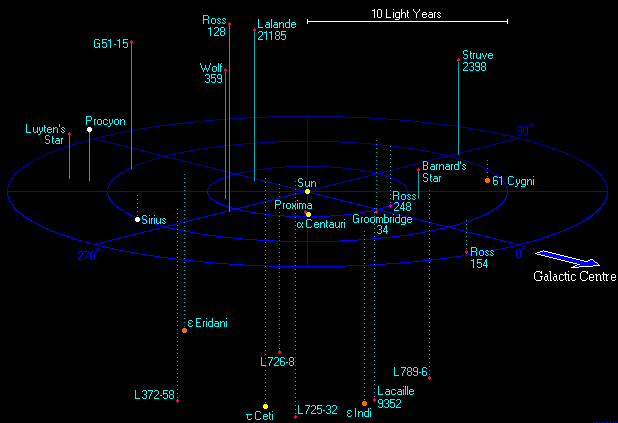Understanding the Universe
- Introduction to Cosmic Distance Ladder
- Astronomical Unit
- Standard Candles
- Cepheid Variables
- Tully-Fisher Relation
- Hubble's Law
- Cosmic Microwave Background
- Challenges and Limitations
- Course Review and Discussion
Light Year
Converting Light Years to Other Units

Unit of length used to express astronomical distances, defined as the distance that light travels in a vacuum in one year.
A light year, as we know, is a unit of distance that represents the distance that light travels in one year. This unit is particularly useful in astronomy, where distances are so vast that conventional units like kilometers or miles become impractical. However, to fully grasp the scale of these distances, it can be helpful to understand how light years convert to other units of measurement.
Light Years to Astronomical Units
An astronomical unit (AU) is another unit of distance commonly used in astronomy. It represents the average distance from the Earth to the Sun, approximately 93 million miles or about 150 million kilometers.
To convert light years to astronomical units, we need to know that light travels at approximately 63,241 astronomical units in a year. Therefore, to convert light years to AUs, we simply multiply the number of light years by 63,241.
Light Years to Parsecs
Parsecs are yet another unit of distance used in astronomy. One parsec is approximately 3.26 light years.
To convert light years to parsecs, we divide the number of light years by 3.26. Conversely, to convert parsecs to light years, we multiply the number of parsecs by 3.26.
Light Years to Miles and Kilometers
While not typically used in astronomy due to the vastness of space, it can sometimes be helpful to understand these distances in more familiar terms.
One light year is approximately 5.88 trillion miles or about 9.46 trillion kilometers. Therefore, to convert light years to miles, we multiply the number of light years by 5.88 trillion. To convert light years to kilometers, we multiply the number of light years by 9.46 trillion.
Understanding these conversions can help us comprehend the vastness of the universe and the immense distances between celestial bodies. It also allows us to communicate these distances in a variety of contexts, using the most appropriate unit for the situation.